Stallknecht Group - Act4Life
In Act4Life we develop, carry out and publish research elucidating the mechanisms behind the health-enhancing effects of physical activity. We also investigate how to best implement physical activity in daily life.
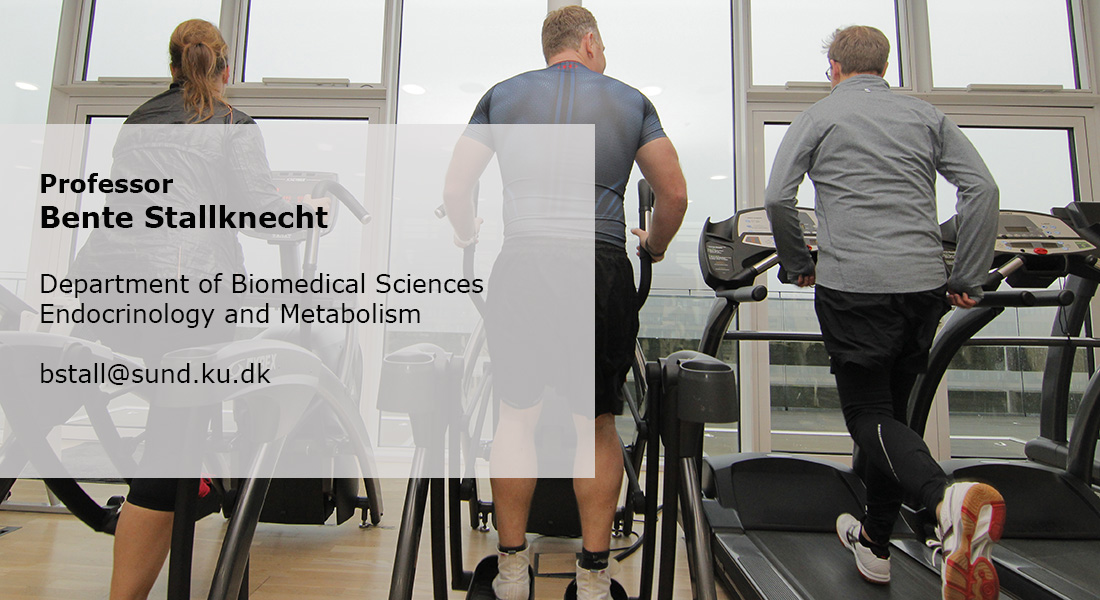
The vision of Act4Life is to prevent inactivity-related diseases such as obesity, type 2 diabetes and cardiovascular disease.
The mission of Act4Life is based on biomedical and interdisciplinary research to develop valid and robust strategies promoting health-enhancing physical activity in everyday life.
We value high academic standards, innovation, diversity and a working environment that combines an ambitious and a social atmosphere.
Adipose tissue
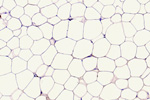 Adipose tissue blood flow is increased during exercise and adipose tissue releases energy for the working muscles in the form of free fatty acids. Adipose tissue mass is most often reduced in response to physical training and although insulin-stimulated glucose uptake in adipose tissue does not seem to be increased by an exercise intervention in humans, other metabolic pathways as well as adipokine production are affected.
Adipose tissue blood flow is increased during exercise and adipose tissue releases energy for the working muscles in the form of free fatty acids. Adipose tissue mass is most often reduced in response to physical training and although insulin-stimulated glucose uptake in adipose tissue does not seem to be increased by an exercise intervention in humans, other metabolic pathways as well as adipokine production are affected.
Overweight
Half of the Danish adult population is overweight. To perform physical exercise might be difficult for people with severe obesity, but most people are only moderately overweight and might be able to control their body weight by regulation of the physical activity level. Both people with severe obesity and with moderate overweight can markedly benefit of regular physical exercise.
Metabolic health
 Metabolic health is markedly improved by physical exercise. The abdominal fat mass is reduced and the peripheral insulin sensitivity and HDL-cholesterol are increased. In addition, in some populations the blood pressure and plasma triacylglycerol are decreased. Weight loss via diets can also influence metabolic health beneficially in people with overweight, but exercise-induced weight loss can convey additional beneficial effects.
Metabolic health is markedly improved by physical exercise. The abdominal fat mass is reduced and the peripheral insulin sensitivity and HDL-cholesterol are increased. In addition, in some populations the blood pressure and plasma triacylglycerol are decreased. Weight loss via diets can also influence metabolic health beneficially in people with overweight, but exercise-induced weight loss can convey additional beneficial effects.
Energy balance
Calories are expended during exercise. However, to expend a significant amount of calories it takes a significant amount of exercise. One kilo of fat contains approximately 10.000 kcal, and this amount of calories would require approximately 20 hours of vigorous intensity exercise to expend. When the body is pushed into a negative energy balance, compensatory mechanisms are initiated which might limit weight loss.
Appetite regulation
 A myth says that you cannot lose weight via physical exercise as appetite is increased by exercise, but this does not seem to be true – at least in the short term. Three months of daily vigorous intensity exercise do not increase energy intake, appetite sensations or hormones known to stimulate appetite in overweight men and weight loss equals energy expended during physical exercise.
A myth says that you cannot lose weight via physical exercise as appetite is increased by exercise, but this does not seem to be true – at least in the short term. Three months of daily vigorous intensity exercise do not increase energy intake, appetite sensations or hormones known to stimulate appetite in overweight men and weight loss equals energy expended during physical exercise.
Physical activity in everyday life
If the pill is not taken, you do not obtain the benefits. This is also true for physical exercise. The challenge therefore is to incorporate a significant amount of physical activity into the various domains of everyday life. Most people exercise in their leisure time, but exchange of passive with active commuting is an additional way of incorporating physical activity into everyday life.
Menopause
 In the woman's menopause, estrogen production has ceased, and body morphology changes from ‘pear’ to ‘apple’ form due to accumulation of adipose tissue around the internal organs in the abdominal cavity, which is associated with negative health changes. Regular physical exercise helps to stabilize energy balance and conveys the same health benefits in post- as in premenopausal women.
In the woman's menopause, estrogen production has ceased, and body morphology changes from ‘pear’ to ‘apple’ form due to accumulation of adipose tissue around the internal organs in the abdominal cavity, which is associated with negative health changes. Regular physical exercise helps to stabilize energy balance and conveys the same health benefits in post- as in premenopausal women.
Technology
Is technology friend or foe for physical activity? Technology has manufactured physical activity out of our daily lives. However, activity apps and smart watches can be used to monitor and motivate physical exercise.
Variable response to physical activity

Not all people respond in the same way to physical activity. Nevertheless, current activity recommendations of ‘at least 30 minutes per day’ are based on a ‘one size fits all’ approach. Identification of phenotypic and genetic predictors that underlie the inter-individual variability in response to physical activity can be used for personalized planning of exercise.
Pregnancy
Physical activity during pregnancy is recognized as a healthy behavior, since it improves various health parameters in mother and child and reduces risk of complications during pregnancy and delivery. Pregnancy may therefore constitute a ‘window of opportunity’ for increasing the women’s physical activity level if the health care system offers facilities or programs that motivate and support the pregnant women to be physically active.
FitMum
 The project is a collaboration between researchers and practitioners at the University of Copenhagen, Nordsjælland's Hospital in Hillerød, and the Technical University of Denmark. The first aim of FitMum is in pregnant women to design and investigate the effects of two different physical activity programs that are based on structured exercise and behavioral counseling, respectively, and supported by health technology.
The project is a collaboration between researchers and practitioners at the University of Copenhagen, Nordsjælland's Hospital in Hillerød, and the Technical University of Denmark. The first aim of FitMum is in pregnant women to design and investigate the effects of two different physical activity programs that are based on structured exercise and behavioral counseling, respectively, and supported by health technology.
Active Commuting To Improve health and Wellbeing in Everyday life (ACTIWE)
This research project combines biomedical, ethnological, and technological approaches to evaluate health effects of physical activity in transport and leisure time domains of everyday life in order to develop sustainable physical activity regimens. The study design of ACTIWE has been published in Contemporary Clinical Trials.
Governing Obesity

Foto: Frederik Gram
The project is one of 18 research initiatives within the University of Copenhagen Excellence Programme for Interdisciplinary Research. The overall aim of Governing Obesity is to provide novel means for governing obesity and its consequences via effective interventions at the societal and individual level, from an early stage towards the morbidly obese individuals, while avoiding unintended and negative effects. The research performance ‘Lev livet med stil – et mellemværende’ was developed in collaboration between Videnskabsteatret and researchers from Governing Obesity.
The study of women before and after the menopausal transition
This study is part of the Copenhagen Women Study and evaluates the potential of physical activity to counteract health-related risk factors as well as psychological and sociological stress factors associated with the menopausal phase. A major finding of the study is that a 3-month intervention of high-intensity aerobic training reduces risk factors for type 2 diabetes and cardiovascular disease to a similar extent in late pre- and early postmenopausal women.
Project FINE
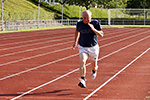 The project is an interdisciplinary collaboration aiming to identify factors that determine an individual's innate insulin sensitivity and to investigate the effects of physical exercise on insulin sensitivity, energy balance and other metabolic health parameters. A finding of the study is that a moderate dose of vigorous endurance training (~30 min/day) induces a larger than expected weight loss, which seems to be due to an increase in everyday physical activity. Also, only minor additional metabolic health benefits are seen after 12 weeks of high (~60 min/day) as opposed to moderate (~30 min/day) dose, vigorous endurance training.
The project is an interdisciplinary collaboration aiming to identify factors that determine an individual's innate insulin sensitivity and to investigate the effects of physical exercise on insulin sensitivity, energy balance and other metabolic health parameters. A finding of the study is that a moderate dose of vigorous endurance training (~30 min/day) induces a larger than expected weight loss, which seems to be due to an increase in everyday physical activity. Also, only minor additional metabolic health benefits are seen after 12 weeks of high (~60 min/day) as opposed to moderate (~30 min/day) dose, vigorous endurance training.
Training per se
This study investigates the effects of physical training per se, weight loss per se, and physical training with a concomitant exercise-induced weight loss on various metabolic health parameters in overweight men. A finding of the study is that endurance training per se increases metabolic health in young, moderately overweight men. Additionally, fitness and fatness were not returned to pre-intervention levels one year after the exercise-induced weight-loss intervention.
Act4Life is skilled in performing human intervention studies involving different types of physical exercise.
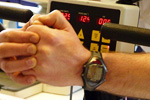
We do detailed, human, metabolic phenotyping and e.g. determine cardiorespiratory fitness by graded exercise test and indirect calorimetry, body composition by DXA-scanning, and peripheral insulin sensitivity by hyperinsulinemic, euglycemic clamp.
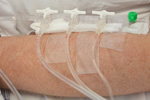
We sample blood, urine, saliva, faeces, adipose tissue and skeletal muscle and also master the microdialysis technique in human adipose tissue and muscle. Physical activity in free-living humans is estimated via heart rate monitors, accelerometers and questionnaires. We also perform appetite and oral glucose tolerance tests and measure sleep via accelerometers and questionnaires.

We quantitate glucose uptake in various human adipose tissue and muscle depots via PET/CT-scanning and abdominal fat and femoral muscle mass via MRI-scanning in collaboration with the Department of Clinical Physiology, Nuclear Medicine and PET, Rigshospitalet, Denmark. Activity level in different domains of everyday life is evaluated via smartphones in collaboration with the Department of Applied Mathematics and Computer Science, Technical University of Denmark, Denmark.
Group Leader
Bente Stallknecht
Dean, Professor
Phone +45 3532 7540
bstall@sund.ku.dk
ORCID: 0000-0003-3117-0451
Group members
| Name | Title | Phone | |
|---|---|---|---|
| Anne Dsane Jessen | PhD Student | ||
| Anne-Sofie Madsen Staples | External | ||
| Bente Merete Stallknecht | Professor | +4535327540 | |
| Ida Karoline Bach Jensen | Master Thesis Student | ||
| Martin Bæk Blond | Guest Researcher | ||
| Saud Abdulaziz M Alomairah | External | ||
| Steffie Vang Gundersen | External |

